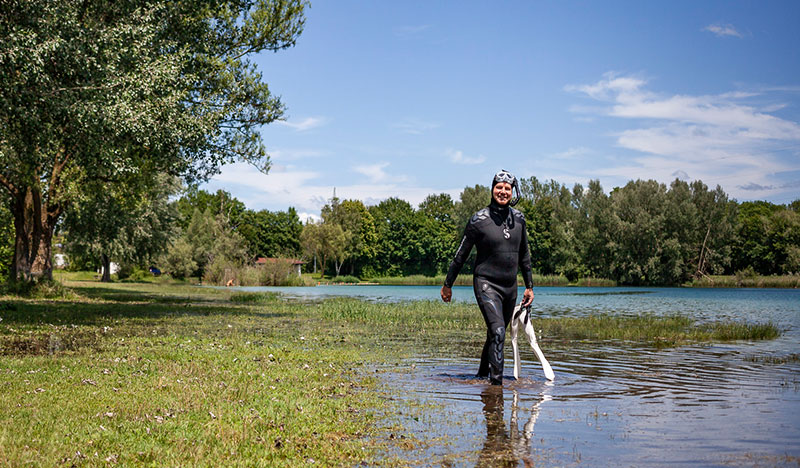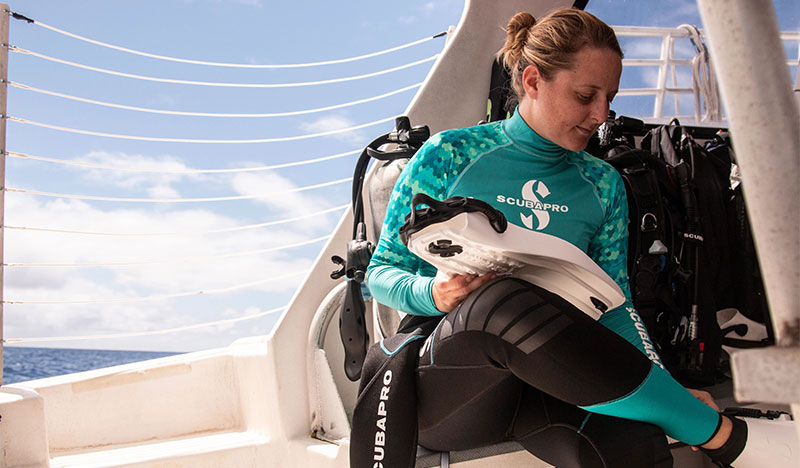The Best Scuba Diving Wetsuit: How to Choose

Unless you're diving in water warmer than 98.6ºF, your body starts losing heat as soon as you hit the water. The primary job of a wetsuit is to reduce or delay your body's heat loss to keep you comfortable and warm during your dive. A good wetsuit not only fulfills those responsibilities but also protects you from scrapes or stings while offering a fluid range of motion during your dive. Investing in a high-quality wetsuit makes a world of difference because no one wants to be shivering or miserable during their bottom time. To find the perfect wetsuit, there are two key factors to consider: fit and comfort.
Fit & Comfort
For a wetsuit to do its job, it needs to fit like a second skin. Wetsuits are designed to trap a thin layer of water between your body and the suit, allowing your body heat to warm the water and keep you toasty. When a wetsuit is too big, it allows excessive water entry and significantly reduces the suit's thermal capabilities. A wetsuit that's too tight can restrict your breathing and range of motion, and the added strain on neoprene stretched past its limits can shorten the suit's lifespan.
A well-fitted wetsuit will fit snugly and provide enough range of motion to touch your toes, stretch your arms, and turn your body. Thicker wetsuits may reduce this range of motion slightly, so take this into account before going up a size in 5mm and 7mm suits. Seals at your neck, wrists, and ankles should be snug but not too tight, and the suit should conform to your body everywhere. The wetsuit's arms and legs should reach your wrists and ankles, and the seals should lie flat against your skin.
How to Know if Your Wetsuit Fits Properly
- Your wetsuit should fit tightly from top to bottom, conforming to your body without gaps or pockets. It should feel like compression shorts – snug with a bit of pressure.
- The seals at your neck, wrists, and ankles should be snug but comfortable. If any feel too tight or painful, you may need a different size or suit.
- The suit's arms and legs should meet your wrists and ankles (unless you're wearing a shorty).
- The crotch should be close to your own.
- It should take a few minutes to put on. Wetsuits should not easily slide on and off; if yours does, you need to go down a size.
We recommend visiting your local dive shop to try on different wetsuits and find your perfect fit. If that's not an option, check out our virtual FitFinder to find the right size online.

Thermal Factors
Wetsuits come in various thicknesses to accommodate a range of water temperatures. The general rule of thumb for thickness is as follows:
- Up to 2.5mm: 72°F and warmer
- 3-4.5mm: 61°F to 75°F
- 5-6.5mm: 50°F to 64°F
- 7mm and up: 45°F to 54°F
This is a general guide, and factors such as exposure length, depth, repeated dives, body type, and use of hoods/gloves/booties can affect warmth. If you're prone to cold, consider adding thermal layers or going up in thickness.
All wetsuits are tested for their thermal protection and have passed CE Certification. This certification is the only objective method to measure material performance for diving suits of 3mm thickness and up.
Remember, not all wetsuits are created equal. Choose a high-quality wetsuit with premium materials and minimal seams for optimal warmth and range of motion.
Additional Considerations
Is it a Scuba Diving Wetsuit?
Scuba diving wetsuits are designed to counteract the effects of pressure and keep you warm at depth, unlike surfing wetsuits.
Is it Certified?
Look for CE and PPE certifications, which indicate that the wetsuit has undergone rigorous testing for safety, performance, and durability.
Is it Mindfully Sourced?
Consider eco-friendly materials and sustainable production, especially given the challenges facing our oceans and waterways.

Tips for Putting on Your Wetsuit
If your wetsuit fits properly, it will be tight. Here are some tips to make putting it on easier:
- Choose the right suit: Look for a wetsuit made from super-stretchy materials to ease the process.
- Add a layer: Wear a thin layer underneath, such as a nylon full suit or rashguard, to reduce friction.
- Add socks: Wearing dive socks can prevent your feet from getting stuck in ankle seals.
- Get wet: Rinse yourself and your wetsuit before putting it on to reduce sticking.
If you plan to dive in different conditions, you may need more than one wetsuit. For cold-water divers, consider a semi-dry wetsuit or drysuit for better comfort. Not sure about the difference? Check out our Wetsuit vs. Drysuit Blog.






